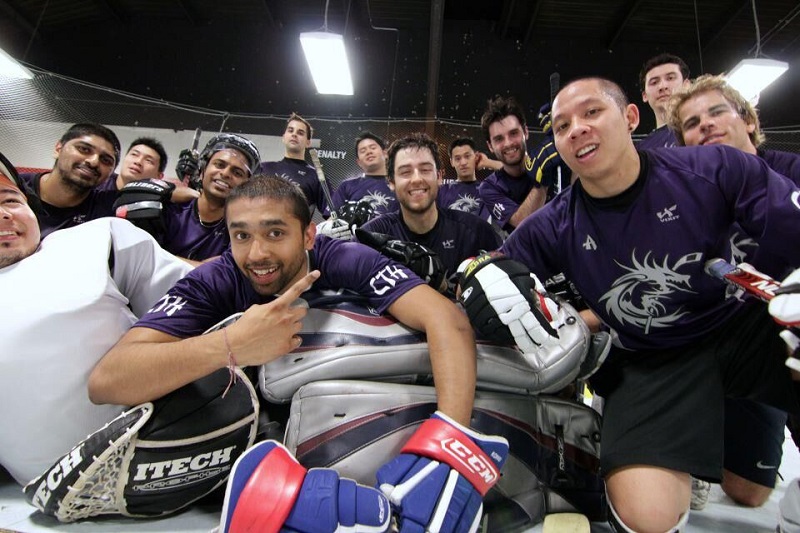Anybody can play ball hockey, and it’s making the sport grow across the country
Just imagine playing hockey without needing to learn how to skate. That’s ball hockey.
With the same level of intensity and excitement, ball hockey is a sport made to mirror Canada’s favourite winter pastime. Almost anyone can play, and it’s not just for kids in gym class or on the street, many adults also play.
Sean Guerriero, the vice-president of the Montreal Ball Hockey League (MBHL), said the sport is gaining popularity because it’s simple to play.
‘‘All you need to know is how to run and hold a stick,’’ he said. ‘‘If you like hockey, that’s the only prerequisite.’’
All you need to know is how to run and hold a stick. – Sean Guerriero
Many of the rules in ice and ball hockey are the same, but the games are played differently. In ice hockey, players can easily glide on their skates if they’re tired or a bit lazy. That’s not the case in ball hockey. The pace of the game relies on players keeping their feet moving without the luxury of an icy surface to propel them forward.
‘‘It’s a big workout,’’ Guerriero said. ‘‘If you’re not backchecking on [the play], you’re called out on it.’’
For university students looking to release stress, Guerriero said ball hockey is a fantastic sport. “It’s a great endorphin-releaser because of the toll it takes on your body to run 200 feet,” he said.

The biggest rule difference between ice hockey and ball hockey is the floating blue line rule. In ice hockey, the offensive zone ends at the opponent’s blue line. In ball hockey, the offensive zone goes all the way back to the red line, at centre ice. So the attacking team has half the ice to set up and make a play. It leaves a lot more space and creates a type of game that, according to Guerriero, relies on possession.
‘‘You gain the zone, you pass back to the point, you open up space,’’ he said. ‘‘The best players in the world don’t run that much.’’
However, ball hockey players still have the same passion for their sport as those on the ice, and it makes a great alternative for those who cannot play the winter version.
‘‘Across Montreal, hockey is a huge part of our culture, and it’s a great way to enter that culture and participate in it without having to learn how to skate,’’ Guerriero said.
In Montreal, ball hockey participation is growing fast. When Guerriero became VP of the MBHL in 2011, the league used hockey rinks in the summer, and didn’t have winter seasons. But a few months later, the Club West Island built an indoor ball hockey rink, open all year. So the MBHL started playing in the winter. Since then, Guerriero said the number of teams has grown from about 30 to around 120, and the MBHL operates year-round with over 3,000 players.
‘‘It’s caught on as more of a year-round sport than just a summer sport,” Guerriero said.
The MBHL took a major hit when the Club West Island closed in 2016, but they bounced back by moving their rink inside a golf dome in Kirkland. On top of that, Montreal’s first five-on-five ball hockey-specific arena, Le Rinque 2.0, opened in April. For Guerriero, having more places to play and grow the sport brings it closer to his dream.
‘‘Our ultimate goal as a sport is Olympic presence,’’ he said. ‘‘To see Team Canada play ball hockey at the Olympics would be a dream come true.’’
Main Photo courtesy of Sean Guerriero




